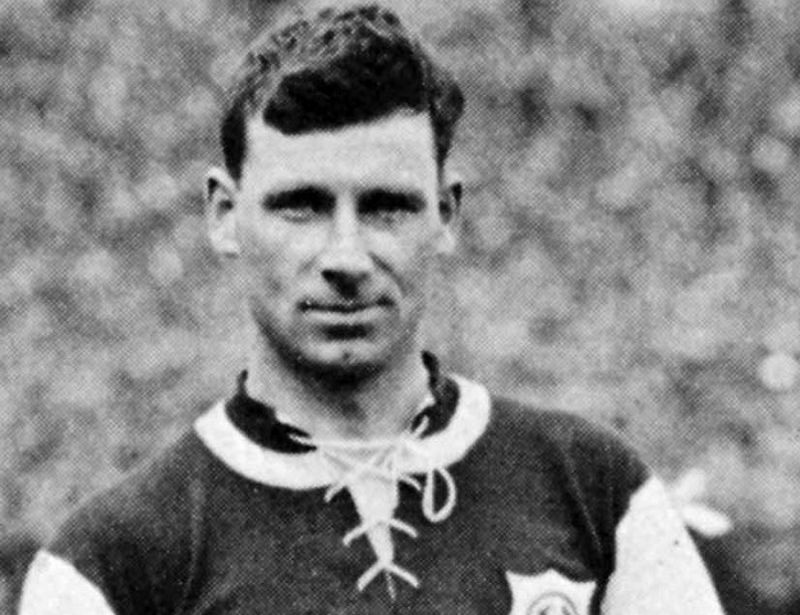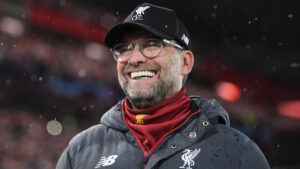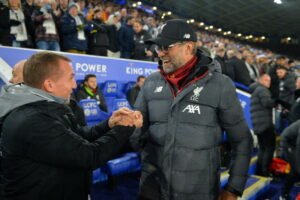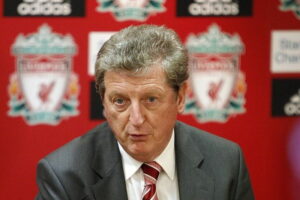
It is fair to say that there isn’t much love lost between Scousers and Mancunians. One exception to that rule might well be that of George Kay, who was born in Manchester but because Liverpool manager and led the Reds to the title during the first post-war season, as well as to the FA Cup final for only the second time in the club’s history.
A decent player in his own right, Kay turned to management when poor health meant that his playing days were numbered, starting out at Luton Town before moving to Southampton and then finding his way to Anfield in 1936, staying in the role for 15 years, once again seeing his health get in the way of his career.
#OnThisDay…
R.I.P. George Kay(21.9.1891-18.4.1954)
1936-1951 LFC 357 games as manager@LFC #LFC pic.twitter.com/NSbWjP3DqA— Юлиян Динев (@forever96juli) April 18, 2021
Liverpool have struggled with Southerners in the past almost as much as Mancunians, so the fact that Kay managed at two Southern teams before he arrived at Anfield is an interesting part of his career path. In some ways, though, he was spiritually Scouse, heading over to Northern Ireland for a time in order to play for the Belfast club Distillery.
When the First World War broke out he served with the Royal Garrison Artillery, eventually joining West Ham United at its conclusion and furthering those Southern roots. During the Second World War he was both too old to fight and also not physically fit enough, so he continued his management of Liverpool.
George Kay the Player
Born on the 21st of September 1891 in Manchester, George Kay joined Bolton Wanderers in 1911, making three league appearances for them. He couldn’t agree satisfactory re-signing terms, however, which is what led him to Belfast’s Lisburn Distillery Football Club at the start of the 1911-1912 campaign.
In spite of the fact that he suffered a long-term injury whilst over there, he made 91 league appearances for the club and scored 14 goals, helping them to win both the Gold Cup and the County Antrim & District Football Association Senior Shield. He was so well-loved over there that he holds the distinction of being the first Englishman to captain an Irish Football League representative team.
Following his time with the Royal Garrison Artillery during the First World War, Kay moved back to England in order to join West Ham United in the July of 1919. He took over the captaincy from Billy Cope for the 1922-1923 campaign, leading West Ham into the First Division and to the FA Cup final against his former side Bolton Wanderers.
The first FA Cup final to be played at Wembley Stadium, it became known as the White Horse Final, with as many as 300,000 people believed to have crammed into the 125,000 or so capacity venue. Bolton won the final 2-0 and when Kay took ill on a tour of Spain he realised his playing days were numbered, eventually retiring after making more 200 league appearances.
Becoming a Manager
Having seen his health deteriorate to the point that he knew he couldn’t keep playing, albeit making a couple of appearances for Stockport County before he hung his boots up for good, Kay decided to get into coaching and got a job working for Luton Town. In 1929 he was given the manager’s job, with the Hatters finishing 13th in his first season and then 7th in his second.
They didn’t exactly take the Third Division South by storm, but it was obviously enough for Southampton to come calling and offer him the manager’s position there in the wake of Arthur Chadwick’s decision to resign after Saints had repeatedly sold his best players to ensure their financial survival.
On 18 April 1954, George Kay passed away at aged 62. He led @LFC to their first post-WW2 league title in 1947. pic.twitter.com/zPL8Ys4Vn8
— IG ‘Trust In KLOPP’ (@imran_IGG) April 18, 2021
He arrived at Southampton in the May of 1931, with Kay making the decision to set up a nursery side for the club. It allowed the team to get new players without having to invest too much financially, with the first team soon benefitting from players like Ted Drake, Charlie Sillett, seeing a new era for the club play out.
He spent five seasons at The Dell, giving his all in order to try to get the Saints out of Division 2 or make progress in the cups. It never quite worked for him, finishing each second in the bottom half of the league and getting knocked out of the FA Cup at the early stages. In the 1933-1934 campaign, for example, they won every home game in the league but picked up just six draws on the road, losing every other match.
Moving to Liverpool
Throughout Kay’s time at Southampton, financial issues restricted what he was able to do. In 1936, these financial restrictions resulted in the enter board of Directors choosing to resign in order to be replaced by a new board. The new board then asked Kay to resign in order to lower the club’s wage bill.
In August, Liverpool offered Kay the manager’s position at Anfield, which he took up alongside his long-serving trainer Bert Shelley. He arrived as a replacement for George Patterson, who had moved back into a more secretarial role due to his own ill health. Things didn’t start all that well for Kay, with three wins and four draws from the club’s first 12 matches under him.
George Kay was born 130 years ago today (21 September 1891) in Manchester. After spells at Luton and Southampton, he managed Liverpool FC from 1936 to 1951. Kay led #LFC to a league title in 1947 and FA Cup final in 1950.#LFChistory_net pic.twitter.com/DfmJw8O23m
— LFChistory.net (@LFChistory) September 21, 2021
A 7-1 win over Grimsby Town in the September was one of the club’s only bright spots, with a 6-2 defeat to Portsmouth and a 5-2 defeat at Brentford painting a dull picture for the manager. Kay’s first season in charge saw Liverpool finish in 18th place, maintaining their First Division status and giving him something to build on.
When they lost the opening day fixture of the 1937-1938 campaign 6-1 at Stamford Bridge, it looked as if the writing was on the wall for Kay. Results improved, however, with Liverpool finishing mid-table and following that up with an 11th place finish in the following campaign, getting read for the next season.
The First Post-War Title
As part of his preparation, Kay brought in a young player called Bob Paisley on a free transfer from Bishop Auckland. He also brought in Billy Liddell, feeling position about Liverpool’s chances. Sadly all of their careers were interrupted when the Second World War broke out.
When the War came to its conclusion, Liverpool took what was then an unusual decision and chose to tour the United States of America and Canada. Kay believed that the climate and diet available in North America would be perfect for the players, organising a punishing schedule that saw them play ten games in less than a month.
The first post-war football season saw #LiverpoolFC win their fifth league title, just one point ahead of local rivals Man United.
This medal from the collection was presented to #LFC Manager George Kay, who remained at #Anfield until 1951.#Liverpool pic.twitter.com/5CksUkeKSK
— The NFC (@The_NFC) January 24, 2019
It meant that the players were in much better condition than the majority of their counterparts, but three defeats in their first seven games meant that some were questioning his methods.
Bob Paisley made his debut in a 7-4 win over Chelsea on the seventh of September, which was also the first game in which Billy Liddell scored a goal.
Seven wins in a row between February and March saw the club well on its way to winning the first First Division title of the post-war era. At the same time, the Reds were progressing in the FA Cup and eventually got knocked out by Burnley in the semi-final, which went to a replay.
FA Cup Final Appearance & Kay’s Departure
When Liverpool went to Molineux on the 31st of May 1947, Wolverhampton Wanderers needed to win the match in order to win the league, whilst a win for Liverpool and other results going their way would see them crowned champions. That is exactly what happened, with the Reds winning 2-1 and securing their fifth First Division title. The top scorers were Jack Balmer and Albert Stubbins, who continued that form under Kay but couldn’t get the Reds close to another title.
In 1950, however, Liverpool did get to just their second FA Cup final in the club’s history when they lost 2-0 to Arsenal in the Wembley Stadium match.
Today we remember George Kay, the Manager who led Liverpool to their first post-WW2 league title in 1947
🏟 @LFC 💯 #legend
George Kay passed away on 18 April 1954, aged 62- only three years after leaving the #LFC job 🙏 Rest in peace George 🔴 #RIP pic.twitter.com/abcK6cXUZt— The Red 🔴 Johnsen (@JohnsenStle) April 18, 2021
Sadly, Kay’s health had been deteriorating for some time and by the time Liverpool reached the FA Cup final it was clear to all that he wasn’t well. He kept going for another few months, but he eventually chose to retire in the January if 1951. Perhaps he stayed in his job for too long, or maybe it was the job that gave him a reason to keep going, but a little over three years later George Kay died in Liverpool, the Mancunian’s adopted home.
That was on the 18th of April 1954, with Billy Liddell saying, “He told me often of the times he had lain in bed, unable to sleep, pondering over the manifold problems that beset every manager… if any man gave his life for a club; George Kay did so for Liverpool.”
George Kay Honours List
During his playing career, George Kay won the Gold Cup and Country Antrim Sheild with Lisburn Distillery, as well as the City Cup. When he became Liverpool manager he ended up taking charge of 357 matches, seeing the Reds win 142 of them, with 93 draws and 122 losses. It meant that his career at Anfield came to a close with a win ratio of 39.78%. Here is a look at what he won:
- Football League First Division: 1946-1947



